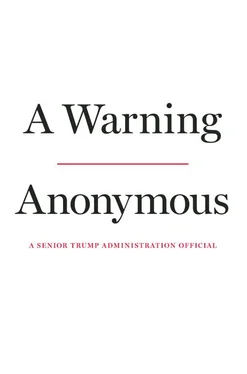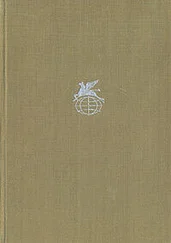Abraham Lincoln famously constructed a “team of rivals” after he won office, assembling his former competitors into a cohesive cabinet. But because of poor planning and widespread doubt about his prospects, Trump wound up with the opposite: “rival teams.” Infighting from the campaign spilled over into the presidential transition. Advisors brandished their knives, back-stabbing each other to get the jobs they wanted. At the same time, a parade of job-seekers made the pilgrimage to Trump Tower in New York to pay homage to the incoming commander in chief, seeking a place on his short list. Most had conveniently changed their minds about the president-elect. Factions formed. Conspiracies to undermine potential candidates—while boosting others—were hatched and dissolved, sometimes in the same day. There was the Kushner camp, the Bannon camp, the Conway camp, and others such as Penceland or the so-called Flynn-stones, acolytes of the anointed national security advisor. They were united at times and divided at others. This was a real-life version of The Apprentice. Some of these rivalries persisted deep into the start of the president’s term. Trump often encouraged disunity by making suggestions about who had his favor and who did not.
Despite the internal bedlam, the president-elect did not end up with a government solely populated by flunkies. Far from it, in fact. Although a long list of highly experienced Republican leaders were de-facto barred from the incoming administration for being “Never-Trumpers,” those who didn’t sign their names onto anti-Trump screeds, myself included, had a shot. Respected political figures and experts signed up. Notwithstanding the surrealness of it all, the process produced a White House team and a cabinet more competent than critics were willing to give Trump credit for. There were former governors such as Nikki Haley and Rick Perry, four-star generals such as John Kelly and Jim Mattis, corporate executives such as Rex Tillerson and Steven Mnuchin, US senators such as Jeff Sessions and Dan Coats, and former cabinet secretaries such as Elaine Chao. This was a solid group of lieutenants for any president-elect and, for a time, Donald Trump’s choices were encouraging to those who doubted him.
The assemblage of outsiders helped tamp down some of the feuding within the Trump team. These people had no reason to fight with one another. They were not tainted by the internal politics of the campaign. Unlike the president-elect’s friends and the leftovers he brought with him, who were used to currying Trump’s favor and surviving his fickle turns of affection, these experienced leaders were not worn down by life inside Trump’s inner circle of flattery and deception. The administration’s recruits came together because many had one trait in common: They didn’t know the chief executive.
False optimism infected the new team. Everyone was hopeful the rancor of the campaign would be replaced by the high purpose of leading the country, which can ennoble even the most distracted minds. “Hope” evaporated on first contact with the president-elect. He was so focused on his “win” that he could barely focus on the forthcoming task of governing. Trump carried around maps outlining his electoral victory, which he would pull out at odd times in discussions meant to focus on preparing him to take office. He would beckon his guests, as well as aides, advisors, and incoming cabinet officers, to gaze at the sea of red on the map, visual proof that he’d won. “Yeah, we know you won,” we would think to ourselves. “That’s why we’re here.”
It was clear something wasn’t right. Incoming staff exchanged worried glances about what they were seeing during the transition. This place was already crazy, they confided in each other, and Trump hadn’t even entered the White House yet. His turbulent demeanor and off-the-wall comments—like his continued fixation with Barack Obama and Hillary Clinton, who were leaving government—were not part of a television persona. They were the real thing. His management of the upstart operation was, well, not really management at all.
The bonds that eventually became an informal “Steady State” were tightened not long after the president’s inauguration. Only days into office, he invited congressional leaders to the White House to meet. This was supposed to be a bipartisan show of goodwill. But at the outset of the meeting the president railed against what he claimed were “millions” of people who voted illegally in the election, depriving him of winning the popular vote. The assertion had been debunked previously, and it was so clearly false on its face that no one could believe he was raising it again. After the meeting, we tried to brush it off by joking that the president was off his rocker. But it wasn’t really a joke. We were genuinely worried by the tone he was setting. Then there were his actions.
President Trump signed off on a rapid-fire barrage of executive orders intended to undo Obama administration policies, cut regulations, spur economic growth, and more. On the surface, everyone agreed with the goals. Only a few aides had been involved in the drafting, though, and the president didn’t really seem aware of what he’d done. Some orders were so hastily written that they backfired spectacularly, like the president’s travel ban on citizens from supposedly terrorist countries—an order that wound up in the courts, was publicly protested, and needlessly cost the administration early congressional and public goodwill. New White House appointees and agency officials were livid that the rollouts weren’t more carefully planned.
Then the president decided to give his chief political strategist, Steve Bannon, a seat on the National Security Council (NSC). This really got folks up in arms. The NSC is a White House organization responsible for advising the president on the most sensitive matters of intelligence, defense, and diplomacy that affect the lives and safety of Americans at home and around the world. Seats at the table are typically reserved for top agency heads, not media advisors. NSC matters weren’t supposed to be “political” discussions. In this case, Bannon was elevated, while others, such as the chairman of the Joint Chiefs of Staff and the director of National Intelligence, were effectively demoted. The president’s most experienced recruits were astounded. Although Trump reversed the order a few months later, it wasn’t forgotten.
The administration was only a few weeks in, and already the mayhem made everyone look foolish. Internal whispers grew louder: This was not a way to do business. As a result, people who’d previously been outsiders to Trump World grew closer to one another and developed a bizarre sense of fraternity, like bank-robbery hostages lying on the floor at gunpoint, unable to sound the alarm but aware that everyone else was stricken with the same fear of the unknown.
“He’s About to Do Something”
To be clear, there is no seditious plot inside the administration to undercut the president. The Steady State is not code for a coordinated scheme to sabotage his policies or, worse, oust him from office. I use “resistance” in quotes because it’s neither the Right’s fear of a “Deep State” gone rogue, or the Left’s conception of an active subversion campaign. Trump’s critics, who are rooting for an actual resistance, have let their imaginations run wild with the idea of public servants frustrating the gears of government to bring down Trump. If this kind of conspiracy exists, it’s news to me, and it would be disturbing. Public service is a public trust. Any government employee with such a nefarious end goal should be condemned.
Instead, the early Steady State formed to keep the wheels from coming off the White House wagon. When presidential appointees started conferring about their shared concerns with the nation’s chief executive, it was not in dimly lit, smoke-filled back rooms of Washington. It was done informally, in weekly phone calls or on the margins of meetings. People who compared notes during the workday and in the normal course of business realized that the administration’s problems were more than fleeting. They were systemic. They emanated from the top.
Читать дальше





![Автор неизвестен Детская литература - Верхом на урагане [Из американского фольклора]](/books/25390/avtor-neizvesten-detskaya-literatura-verhom-na-urag-thumb.webp)


